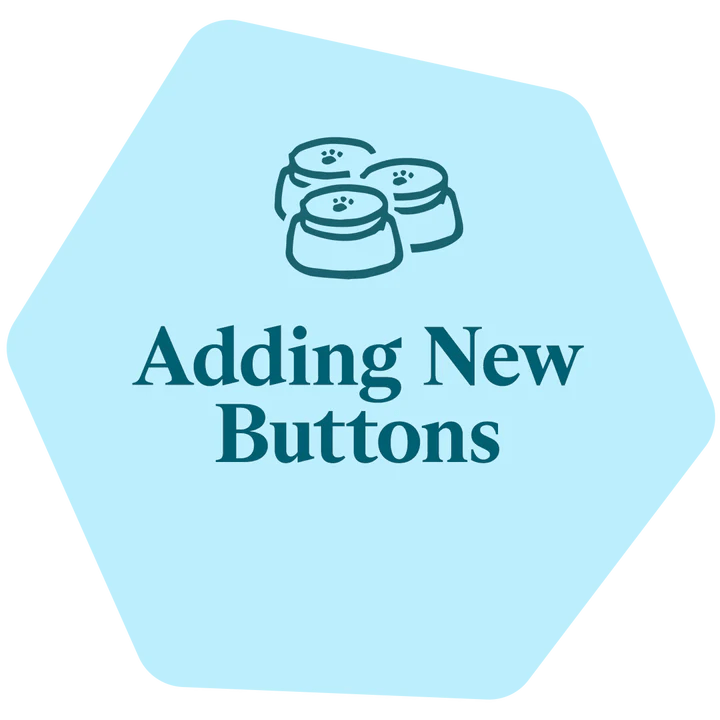Before introducing more than 4-6 buttons to your learner, make sure they:
- Press buttons regularly and understand the concept behind each button
- Understand the meaning of the buttons they already have
Your learner might not use every button equally, but just because your learner doesn’t use a button doesn’t mean they don’t understand it. As long as they appear to understand the concept, you’re in the clear.
Wait to add more buttons if:
- Your learner is not pressing buttons on their own
- They are indiscriminately pressing multiple buttons and expecting the same result
If your learner is still not pressing buttons on their own → begin target training
If your learner is indiscriminately pressing multiple buttons and expecting the same result (e.g. all of them mean TREAT) → spend more time modeling their current concepts before moving on
When to add new buttons:
- Your learner presses current buttons consistently in ways that make sense
- Tries to communicate or express something beyond current buttons
- Has to use their natural behavior and buttons for you to understand
- Has lost interest in using the soundboard (which can be normal! Learners go through talkative and quiet stages, which can be influenced by many environmental factors.) Adding new buttons can reignite interest.
How to add new buttons:
- Introduce 1-2 buttons at a time.
- Don’t worry if you felt like you accidentally introduced too many concepts too soon. Simply retract the most recent ones and wait until your learner seems ready to reintroduce them.
- Adding new buttons or making soundboard changes should be a gradual process
- Avoid making changes to the soundboard and introducing new concepts at the same time.
- Adding naturally paired or contrasting concepts together might help them understand and differentiate the meaning of both (e.g. NOW/LATER, YES/NO, OUT/IN, UPSTAIRS/DOWNSTAIRS).
Tips for picking buttons:
- Choose buttons that are motivating and relevant to your learner
- Choose concepts that are familiar, predictable, frequent, and functional
- Choose routine words (OUTSIDE, WALK, DINNER), social words (MOM, DAD, HI), attention getters (WANT, HELP, MORE), family members, and their own names
- Choose useful concepts that can be used with other words
If you have questions or feedback regarding this content, please email us at learning@fluent.pet




Leave a comment
This site is protected by hCaptcha and the hCaptcha Privacy Policy and Terms of Service apply.